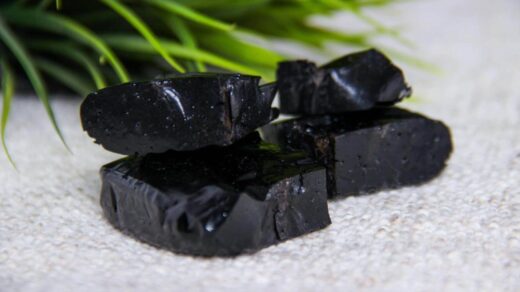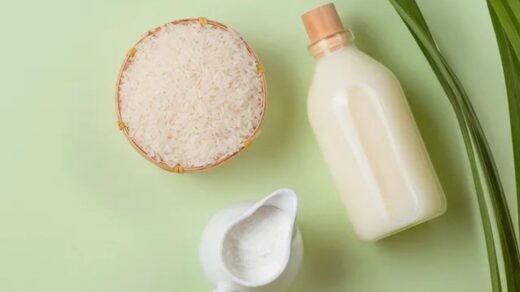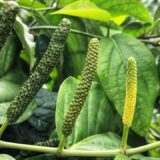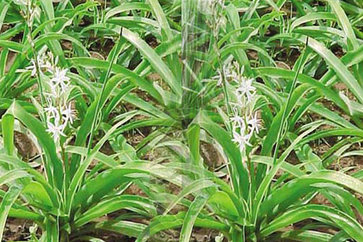How to Make Ayurvedic Detox Khichdi: A Recipe for Cleansing
Khichdi – A traditional Indian food that every Indian loves to eat. It is not only appetizing but is full of nutritional value. Khichdi generally means a mixture of two types of grains. Traditionally, it is prepared with yellow moong daal (Split Green Gram) and white rice as the main ingredients.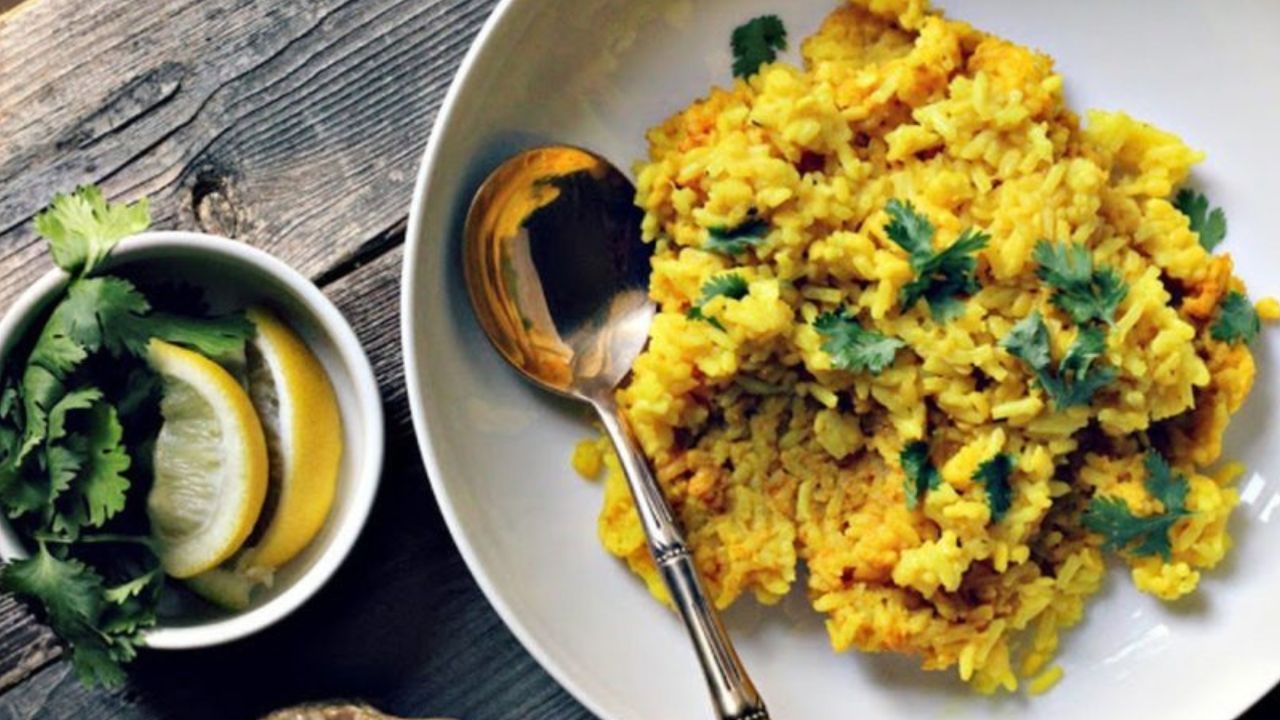
It is one of the few diets that are easily digestible due to its balanced combination of spices and provides full nourishment to the body. Due to this property, khichdi turns out to be the best food during the change of seasons, illness, and stress.
It is even a primary food advised in Ayurveda for internal cleansing. The soft, comforting texture of khichdi makes it a go-to dish for all age groups, especially during times when the body requires a gentle meal to regain strength.
It is also believed to help maintain a healthy gut, as the spices used in khichdi—such as cumin, ginger, and turmeric—are known to aid digestion and boost immunity. Often served with a dollop of ghee (clarified butter), khichdi is a perfect blend of warmth, flavor, and nourishment.
In addition, khichdi has a great versatility. It can be customized according to one’s preferences by adding vegetables like carrots, peas, and potatoes. Different regional variations exist across India, each adding its unique touch to the dish. Whether served with curd, pickle, or papad, khichdi remains a staple comfort food cherished by families everywhere.
What is khichdi?
Khichdi is a traditional Indian dish known for its nutritional value and significance. Pronounced as “kitch-ade,” it is a wholesome and balanced meal recommended for all age groups, from young children to the elderly.
This comforting Indian dish has been enjoyed for thousands of years. Its simplicity and nutritional benefits make it a popular choice, often introduced as the first solid food for babies in India.
In essence, khichdi is a unique combination of protein, fat, carbohydrates, fiber, healthy oils, vitamins, and minerals that nourish the body, providing all the essential nutrients needed for overall well-being.
Importance of Khichdi In Ayurveda
In Ayurveda, khichdi is considered the ultimate food for overall health and well-being. It is revered for its ability to support the body’s natural healing process and is often prescribed as a cleansing food for a variety of ailments. As a mono diet, khichdi helps reset the body’s systems, promoting a sense of balance and vitality.
Khichdi is classified as a “sattvic food,” which means it is a purely vegetarian dish that is rich in Prana — the life force that sustains energy and vitality. Foods with Prana, like khichdi, are thought to promote clarity, peace of mind, and spiritual well-being, as they are pure and nourishing to the body.
Moreover, khichdi is often referred to as a “tri-doshic” food, which means it has the unique ability to balance all three doshas in the body: Vata, Pitta, and Kapha. This quality makes it an ideal food for individuals with varying imbalances, as khichdi works to harmonize and restore equilibrium to the body’s internal energies. Whether someone is experiencing digestive issues, or stress, or simply needs a revitalizing meal, khichdi is known to help stabilize the doshas and promote holistic health.
Additionally, because khichdi is easy to digest, it provides a gentle, nourishing option during times of detoxification, illness, or when recovering from stress or exhaustion. Its versatility allows it to be customized with different herbs, spices, and vegetables, making it suitable for various dietary needs and preferences. In Ayurvedic tradition, khichdi is not only a food for physical nourishment but a way to support mental clarity and emotional well-being as well.
How to Make Khichdi?
Kichdi is so simple and very easy to make as its ingredients are always in your kitchen or can be easily available anywhere on the market.
You’ll be surprised how easily and quickly it can be prepared. Below is the ten khichdi diet recipes for babies as well as elders.
1. Simple Rice Khichdi
Serves: 2 servings
Ingredients:
- 1/3 cup (Split green gram )Moong Dal
- 2/3 cup (short grained Rice)
- 1 teaspoon Oil (optional)
- 3½ cups Water
- 2 tablespoons Ghee
- 1/8 teaspoon Turmeric Powder
- Salt to taste
Directions:
- Take rice and moong dal in a small bowl and wash it thoroughly with water 4-5 times.
- Now drain the water and put them into the cooker, add turmeric powder, oil, water, and salt. Stir it well, and taste the water for salt if required you can add more to it.
- Close the lid of a pressure cooker and cook for 1 whistle on high flame and the remaining 3 whistles on medium flame.
- Turn off the flame and wait for 8-10 minutes so that the steam pressure comes down naturally. If you open the lid immediately, khichdi may remain uncooked.
- Open the lid and add ghee and mix it well. So the Moong Dal Khichdi is ready for serving.
Tips and Variations:
- You can use 4 cups of water if you want khichdi to be softer and gravy-like.
- You can also use 2 tablespoons of toor dal instead of moong dal as mentioned in step 1.
- For extra flavor, you can use cumin seeds, chopped garlic, and curry leaves over the cooked khichdi for variation.
2. khichdi with Brown Basmati Rice
Serves: 2 servings
Ingredients
- 1/2 cup brown rice
- 1/2 cup mixed moong and moth daal
- 1-2 green/red chilies, chopped
- 1 clove of garlic, finely chopped
- 1/2” ginger, finely chopped
- 1 onion, chopped
- 2 tomatoes, pureed (or 5 tbsp tomato puree)
- A pinch of Hing (asafoetida)
- 1 tsp cumin seeds
- 1/2 tsp turmeric powder
- Salt to taste
- Lemon juice to taste
- 2 tsp ghee
Directions:
- Take brown rice, moon, and moth daal in a bowl Wash them thoroughly in water for 3-4 times. Soak the mixture of rice and daal in 3 cups of hot water for 20 minutes.
- Heat ghee in a pressure cooker do not overheat or it will burn with a flame. Add cumin seeds and hing to it. When the seeds start to sputter, add chopped onion and fry the onion for a minute.
- Next add chopped garlic, ginger, and chilies to the onions and fry properly for another for 5 mins.
- Then add the tomato puree and remaining all the spices to it. Mix it well for a minute and then add the soaked rice and daal, and add water to it.
- Close the lid of the pressure cooker and cook for 2 whistles on low flame.
- Turn off the flame and wait for 8-10 minutes so that the steam pressure comes down naturally. The khichdi is ready to serve.
3. Amaranth Leaves khichdi
Makes: 3 Servings
Ingredients
- 3/4 cup Rice
- 1 cup Yellow Moong Dal (Split)
- 100 grams Green Amaranth Leaves, finely chopped
- 1 teaspoon Turmeric powder (Haldi)
- 2 Green Chillies, slit
- 1 teaspoon Cumin seeds
- 1 tablespoon Ghee
- 1-inch Cinnamon Stick
- Salt to taste
Directions:
- First of all, prepare all the ingredients with the required quantity and keep them aside.
- Take the Amaranth Leaves and cut off the stems. Put the leaves in a bowl, Soak in plenty of water for a few minutes so that the dirt and grit settle down. Wash them thoroughly and chop them roughly.
- Take rice and dal and wash thoroughly in water 3-4 times.
- Take a Pressure Cooker; add dal, rice, amaranth leaves, green chilies, turmeric powder, and salt into it.
- Now add 5 cups of water so that khichdi becomes a good mish-mash.
- Close the lid of the pressure cooker and cook for 2 whistles on high flame and cook for 2 whistles on low flame. Turn off the flame, and let the pressure of the cooker release naturally.
- When the pressure is released, open the cooker and stir the khichdi and transfer the amaranth khichdi to the serving bowl.
- Now it’s time for the tadka take a frying pan put ghee and heat it, add cinnamon stick, and mustard seeds, and allow it to crackle.
- Pour it over the Amaranth khichdi and serve with Gujarati Kadhi.
4. khichdi with Buckwheat
Makes 6 servings
Ingredients
- 1 1/2 cups buckwheat (kutto)
- 1/2 cup yellow moong dal (split yellow gram)
- 1 cup chopped and boiled mixed vegetables (French beans, carrots, green peas, cauliflower)
- 1 tsp oil
- 2 black peppercorns
- 1 to 2 cloves
- 1/2 tsp cumin seeds
- 1/4 tsp asafoetida (hing)
- 1/4 tsp turmeric powder (Haldi)
- 2 tsp green chili paste
- salt to taste
Directions:
- Take brown moong dal and buckwheat together in a bowl Wash them thoroughly in water for 3-4 times, soak the mixture, and keep aside.
- Now heat the oil in a pressure cooker, add cumin seeds, cloves, and peppercorns into it.
- Soon as the cumin seeds crackle add asafoetida in it then a mixture of moong dal, buckwheat adds mixed vegetables, and fry it on a medium flame for about 2 to 3 minutes.
- Add green chili paste, turmeric powder, salt, and 4 cups of water, mix it well and cook for 3 whistles.
- So the khichdi is ready to serve, enjoy hot khichdi with kadhi or low-fat curds
5. Millet Khichdi
Serves: 2 servings
Ingredients:
- 1/4 cup Foxtail Millet (Thinai / Kangni)
- 1/2 tbsp Yellow Moong dal
- 2 tbsp Carrots, diced
- 2 tbsp French beans, chopped
- 2 tbsp Peas
- 3 tbsp Onion, chopped
- 3 tbsp Tomato, chopped
- 2 Green chili, slit
- 1/4 inch piece of Ginger, chopped
- 1/4 tsp Mustard seeds
- 1/4 tsp Cumin seeds
- 1/8 tsp or 1 pinch of Turmeric powder
- 1/2 tsp Curry powder
- 5 Curry leaves
- 1 pinch Asafoetida
- 1+1/2 cup Water
- Salt to taste
- 1 tbsp Oil or ghee
Directions:
- Take a pan put foxtail millet and dry roast for 1 – 2 mins on low flame. Remember it should be a little hot that you could touch it and then transfer to a bowl.
- Now take moong dal to the pan and dry roast it for 15-20 seconds and transfer it to the same bowl.
- Take a pressure cooker ass oil put temper mustard seeds. When the mustard splutters add cumin seeds and asafetida, and let it crackle.
- When starts crackling add onions and cook till it turns a little brownish.
- Now add tomato, and ginger and saute for a few seconds, add chopped vegetables, peas, curry leaves, and green chilies, and mix well.
- Add curry powder, turmeric powder, dry roasted foxtail millet, yellow moong dal and stir it well.
- Add water and salt mix well, close the cooker, and cook for 3 whistles over a low flame.
- Turn off the flame and wait for a few minutes so that the steam pressure comes down naturally, open the cooker and mash gently.
- Millet khichdi is ready to eat, serve hot with more ghee drizzled on top with curd raita or pickle.
Healthy Khichdi Recipe For Baby
Khichdi is nutritious and complete for all ages; can be made out of varieties of mixtures like dals or lentils, vegetables, and rice. Indians generally use khichdi as their first baby food as it is easy to digest and its Ingredients are full of nutrient value. Below are some of the baby recipes that you can make at home.
1. Plain khichdi recipe
Age: 6-9 Months Baby
Ingredients
- 2 tbsp Rice (cooked)
- 1 tbsp Moong dal or Tur dal
- 1 cup Water
- 1/4 tsp Ghee
- A pinch of Turmeric powder
- A pinch Salt
Directions:
- Take rice and dal wash it thoroughly in water 3-4 times, and soak the mixture in 1 cup of water for 1/2 an hour.
- Take a pressure cooker put rice dal mixture into it, add a pinch of turmeric powder and a pinch of salt, and cook for 4 whistles on medium flame.
- Once the steam pressure subsides open the cooker, and mash it until it becomes creamy and smooth.
- Now add 1/4 tsp of ghee and mix it well again. The khichdi is ready to be served.
Note: Feed the baby when it is warm if it becomes cold it will thicken and solid. For more creamier, you can add more water during cooking. Every time you feed a child prepare it fresh. If your baby has any allergic reactions consult a doctor.
2. Plain vegetable khichdi
Age: 6-9 Months Baby
Ingredients
- 1/2 cup Rice
- 2 Tablespoon Toor Dal
- 2 Tablespoons Moong Dal
- 1/4 turmeric powder
- Ghee
- 1 cup Mixed chopped vegetable
- Potato
- Carrot
- French beans
- Bottle gourd (Louki)
- Peas
- Pumpkin
- Ash gourd
- Beetroot
- Beans
Note: You can add according to availability.
Directions:
- Take rice and dal wash it properly and soak in water for half an hour. Drain the water before using.
- Take a pressure cooker, add ghee put Jeera, and turmeric powder, and stir a little add rice, and dal and fry then for a minute, in the end, add 3 cups of water.
- Cook it for 1 whistle on high flame and 2 on medium flame.
- Soon after the steam settles, mash it the khichdi is ready to eat.
3. Mix Vegetable Khichdi
Age: 9-12 Months Baby
Ingredients
- 1/2 cup rice
- 1/2 cup moong dal (green gram)
- 1 teaspoon ghee
- A pinch of turmeric
- 1/2 tsp cumin seeds
- chopped coriander leaves
- 1 cup Mixed chopped vegetable
- Potato
- Carrot
- French beans
- Bottle gourd (Louki)
- Peas
- Pumpkin
- Ash gourd
- Beetroot
- Beans
Note: You can add according to availability.
Directions:
1 Take rice and dal wash it thoroughly in water 3-4 times, and soak the mixture in 1 cup of water for 1/2 an hour.
- Take pressure to add ghee to it; put the cumin seeds till it crackles.
- Now add rice and dal sauté a little, add vegetables and a pinch of turmeric stir it well.
- Add water and cook it for 1 whistle on high flame and 3 whistles on low flame.
- Soon after the steam settles, mash it the khichdi is ready to eat.
4. khichdi with Pigeon Peas (Toor Dal)
Age: 6-12 Months Baby
Ingredients:
- 1/2 cup Rice
- 1/4 cup Toor Dal (Yellow Lentils)
- 1 teaspoon Ghee
- 1/2 tsp Cumin Seeds
- 1 pinch Hing (Asafoetida)
- 1/2 tsp Turmeric Powder
Directions:
- Wash the toor dal and rice thoroughly until the water runs clear, then soak them in water for about half an hour.
- In a pressure cooker, add the soaked rice and dal along with 2 cups of water and turmeric. Stir well to mix.
- Close the lid and cook on medium flame for 4-5 whistles. Once done, allow the pressure to release naturally.
- Heat ghee in a pan, and add cumin seeds and hing. Let the cumin seeds crackle.
- Open the pressure cooker and pour the fried ghee over the cooked khichdi. Mash it well until it reaches a soft, smooth consistency.
- Your Khichdi with Toor Dal is ready to serve!
Note:
- This khichdi can be easily digested by babies and is perfect for introducing solid foods.
- Always consult your pediatrician before introducing new foods to your baby’s diet.
5. Spinach Khichdi
Age: 10-12 Months Baby
Ingredients:
- ½ cup Rice
- ½ cup Toor dal
- 2 cups chopped Spinach
- 1 small-sized Onion
- ½ Green chili (optional)
- ½ inch Ginger
- 4 cloves Garlic
- ½ tsp Garam masala powder (optional)
- ¼ tsp Pepper powder
- 1 tsp Lemon juice
- 4 cups Water
- 2 tbsp Ghee
- ½ tsp Cumin seeds
- Salt to taste
- A pinch of Turmeric powder
- A pinch of Hing (Asafoetida)
Directions:
- Wash the rice and toor dal thoroughly, and soak them in warm water for 20 minutes.
- Heat a pan and add ½ tsp of ghee. Fry the spinach and green chili together until the spinach shrinks. Once done, switch off the flame.
- Grind the cooked spinach and green chili into a fine paste and set it aside.
- In a pressure cooker, heat ghee and add cumin seeds. Let them crackle, then add the chopped onions, ginger, and garlic. Sauté until the onions turn golden brown.
- Once the onions are golden, add the spinach puree, turmeric powder, garam masala (if using), pepper powder, and required salt. Stir well.
- Add the soaked rice and toor dal, mixing them thoroughly with the spinach mixture.
- Pour in the required water, bring it to a boil, and close the lid of the pressure cooker.
- Cook for 3-4 whistles on medium flame. Once the pressure releases, open the lid, add lemon juice, and mash the khichdi with a spoon.
- Your Spinach Khichdi is ready! Top it with extra ghee if desired.
Note:
- Some spices may cause allergies in babies, so be mindful of any family history of allergies and consider avoiding them until your baby is older.
- Always cook rice and dal thoroughly until soft and mashed for easier digestion.
- Wash rice, dal, and vegetables thoroughly to remove any pesticides.
- Garlic and asafoetida aid in digestion, so always include them for baby’s comfort.
- This dish can be given to babies above 6-7 months as their first solid food, but it’s important to consult your doctor first.
Ayurvedic Detox Khichdi is a simple yet nourishing dish that promotes overall health, balances the body’s doshas, and supports digestion. By combining easily digestible ingredients like mung beans, rice, and healing spices such as turmeric, cumin, and ginger, this dish is not only gentle on the digestive system but also helps eliminate toxins from the body.

